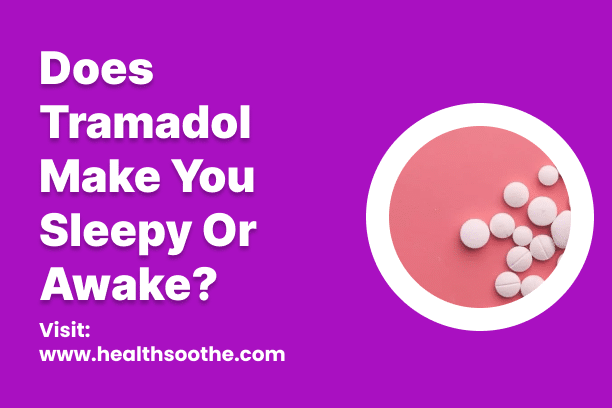Tramadol is prescribed for the management of moderate to severe pain. It is sometimes incorporated into combination therapy, indicating that it might be necessary to use it in conjunction with other medications.
How it works
Tramadol falls under the category of drugs known as opioid agonists, which constitutes a group of medications functioning in a comparable manner. This class of drugs is frequently employed to address similar medical conditions.
The mechanism of action of tramadol involves altering the perception of pain in the brain. Tramadol bears similarities to endorphins, naturally occurring substances in the brain. Endorphins attach to receptors, specific parts of cells designed to receive particular substances. Subsequently, these receptors diminish the transmission of pain signals that the body sends to the brain. In a similar fashion, tramadol operates to reduce the intensity of pain perceived by the brain.
Tramadol side effects
Tramadol oral tablets may induce drowsiness, and it is advisable to refrain from driving, operating heavy machinery, or engaging in hazardous activities until you understand how the drug affects you. Additionally, tramadol can lead to various side effects.
Common side effects encompass:
- Dizziness
- Headache
- Drowsiness
- Nausea and vomiting
- Constipation
- Lack of energy
- Sweating
- Dry mouth
- Itching
If these effects are mild, they might resolve within a few days or weeks. However, if they persist or become more severe, consulting your doctor or pharmacist is recommended.
Serious side effects necessitating immediate medical attention include:
- Serotonin Syndrome: Symptoms may involve a fast heart rate, high blood pressure, elevated body temperature, heightened reflexes, lack of coordination, nausea, vomiting, diarrhea, agitation, hallucinations, and coma.
- Serious Breathing Problems: Indications encompass slowed breathing rate, very shallow breathing, fainting, dizziness, confusion.
- Physical Dependence and Withdrawal: Symptoms may include irritability, anxiety, restlessness, trouble sleeping, increased blood pressure, fast heart rate, dilated pupils, teary eyes, runny nose, yawning, nausea, vomiting, loss of appetite, diarrhea, stomach cramps, sweating, chills, muscle aches, back pain, joint pain.
- Adrenal Insufficiency: Symptoms involve prolonged tiredness, muscle weakness, abdominal pain.
- Androgen Deficiency: Manifestations include tiredness, trouble sleeping, decreased energy.
- Seizures
- Addiction or Misuse: It's crucial to be aware of the potential for addiction or misuse of the drug.
Note: This information serves as a general guide, and individual responses to the drug can vary. Consult with a healthcare professional for personalized advice based on your medical history.
Read Also: Vienva Birth Control Reviews: Is This BC Pill the Best?
Pros and Cons of Tramadol
Pros of Tramadol
- Effective Pain Management
- Versatility
- Lower Abuse Potential
- Widely Available
Cons of Tramadol
- Addiction and Dependence
- Side Effects
- Serious Side Effects
Differences Between Tramadol and Linzess
Tramadol
Tramadol is an opioid analgesic, primarily used for pain management. It works by altering how the brain perceives and responds to pain signals.
Linzess
Linzess is a medication used to treat certain gastrointestinal conditions. It is classified as a guanylate cyclase-C agonist and is specifically indicated for the treatment of irritable bowel syndrome with constipation (IBS-C) and chronic idiopathic constipation (CIC).
Alternative to Tramadol
Nonsteroidal Anti-Inflammatory Drugs (NSAIDs)
- Examples: Ibuprofen, Naproxen
- NSAIDs can be effective for relieving pain and reducing inflammation. They are commonly used for conditions like arthritis, musculoskeletal pain, and certain inflammatory conditions.
Tramadol may interact with other medications
Tramadol oral tablets have the potential to interact with various medications, vitamins, or herbs, altering their effectiveness or causing harmful effects. It's crucial to inform your doctor about all substances you are taking to prevent adverse interactions. Some examples of interactions include:
Drugs you should not use with tramadol:
- Carbamazepine: May reduce tramadol's effectiveness, increase seizure risk.
Interactions that increase your risk of side effects from other drugs:
- Depression drugs (e.g., sertraline, fluoxetine): Risk of serotonin syndrome (agitation, fast heartbeat, increased body temperature).
- Monoamine oxidase inhibitors (MAOIs): Risk of serotonin syndrome.
- Linezolid: Risk of serotonin syndrome.
- Lithium: Risk of serotonin syndrome.
- St. John’s wort: Risk of serotonin syndrome.
- Headache drugs (e.g., sumatriptan): Risk of serotonin syndrome.
- Hypnotics (e.g., zolpidem): May lead to slowed breathing, decreased blood pressure, confusion.
- Benzodiazepines (e.g., alprazolam): Increased risk of confusion, slowed or stopped breathing, decreased blood pressure, coma, or death.
- Anti-psychotic drugs (e.g., chlorpromazine): May cause slowed breathing, decreased blood pressure, confusion.
- Anesthesia drugs (e.g., succinylcholine): Risk of slowed breathing, decreased blood pressure, confusion.
- Opioid drugs for pain (e.g., hydrocodone): Increased risk of confusion, slowed or stopped breathing, decreased blood pressure, coma, or death.
- Digoxin: Tramadol may affect digoxin levels.
- Warfarin: Tramadol may affect warfarin levels; INR monitoring may be needed.
Interactions that increase your risk of side effects from tramadol:
- Antibiotics (e.g., erythromycin): May increase tramadol side effects.
- Antidepressants (e.g., amitriptyline): May increase tramadol side effects.
- Antifungal drugs (e.g., voriconazole): May increase tramadol side effects.
- Heart rhythm drugs (e.g., quinidine): May increase tramadol side effects.
- Protease inhibitors (e.g., ritonavir): May increase tramadol side effects.
Always consult your healthcare professional for personalized advice, considering your medical history and the specific medications you are taking. This information is not a substitute for professional medical advice.
How to take tramadol
Certainly, here is a summarized version of the dosage information for tramadol oral tablets:
Forms and Strengths:
Generic: Tramadol
- Immediate-Release Oral Tablet:
- Extended-Release Oral Tablet:
- Strengths: 100 mg, 200 mg, 300 mg
Brand: Ultram
- Immediate-Release Oral Tablet:
Dosage for Moderate to Severe Pain:
Adult Dosage (18–64 years):
- Immediate-Release Tablet:
- Typical daily dosage: Increased by 50 mg every 3 days to reach 200 mg/day (50 mg 4 times a day).
- Maintenance dosage: 50–100 mg every 4–6 hours as needed.
- Maximum dosage: 400 mg per day.
- Extended-Release Tablet:
- If not taking immediate-release tablets: Starting dosage 100 mg once per day.
- Dosage increases: Increased by 100 mg every 5 days.
- Maximum dosage: 300 mg per day.
- If already taking immediate-release tablets: Dosage determined by previous immediate-release dosage.
- Maximum dosage: 300 mg per day.
Child Dosage (0–17 years):
- Immediate-Release Tablet:
- Child (17 years): Total daily dosage may be increased by 50 mg every 3 days to reach 200 mg/day.
- Maintenance dosage: 50–100 mg every 4–6 hours as needed.
- Maximum dosage: 400 mg per day.
- Child (0–16 years): Not recommended.
- Extended-Release Tablet:
- Child (0–17 years): Not recommended.
Senior Dosage (65 years and older):
- Maximum dosage of immediate-release tablet if older than 75 years: 300 mg per day.
Special Considerations:
Kidney Disease:
- Immediate-Release Tablet:
- Severe kidney problems: 50 mg to 100 mg every 12 hours; maximum dosage 200 mg per day.
- Extended-Release Tablet:
- Severe kidney problems: Not recommended.
Liver Disease:
- Immediate-Release Tablet:
- Severe liver problems: 50 mg every 12 hours.
- Extended-Release Tablet:
- Severe liver problems: Not recommended.
Always consult your healthcare professional for personalized advice based on your age, condition, and medical history. This information serves as a general guide and is not a substitute for professional medical advice.
Tramadol warnings




